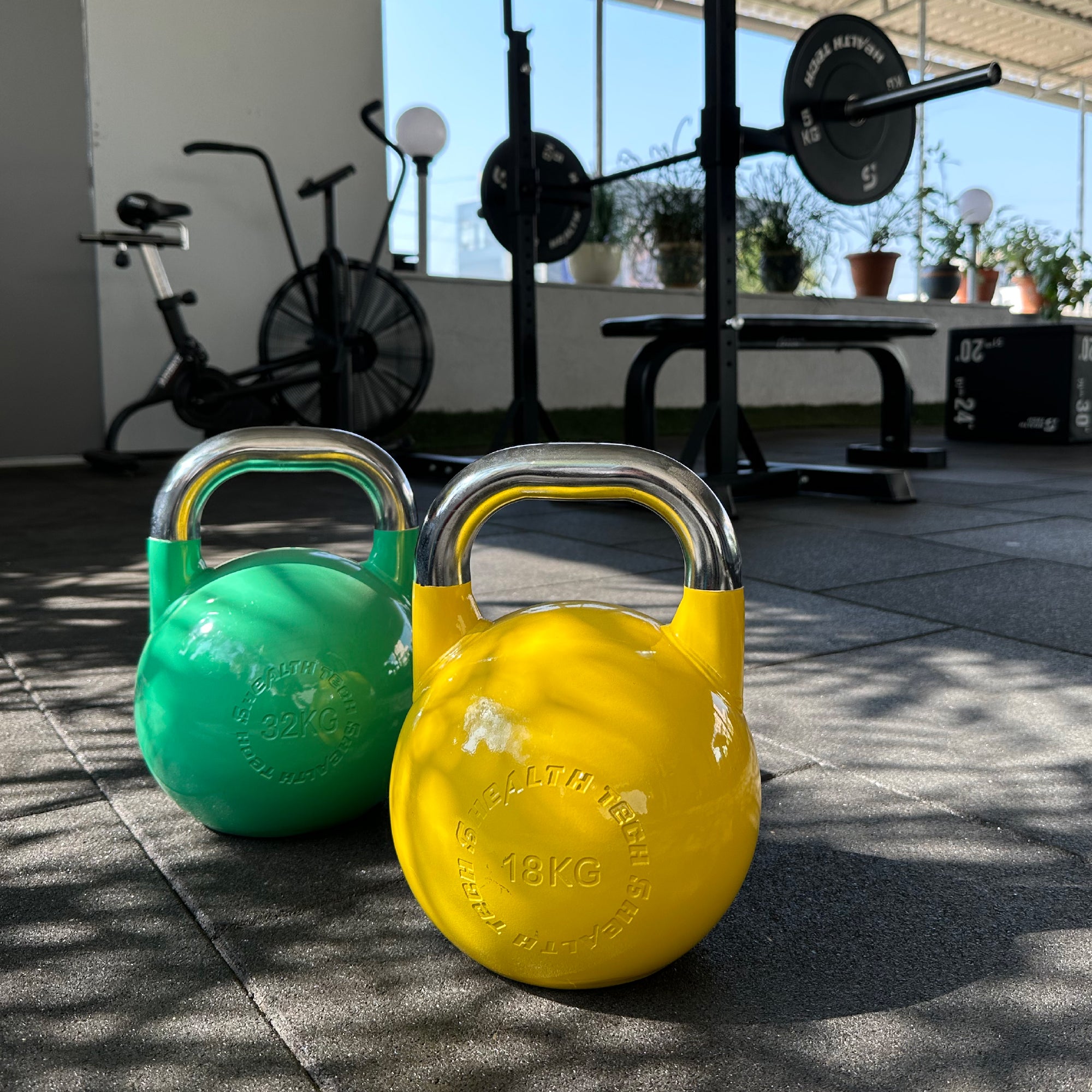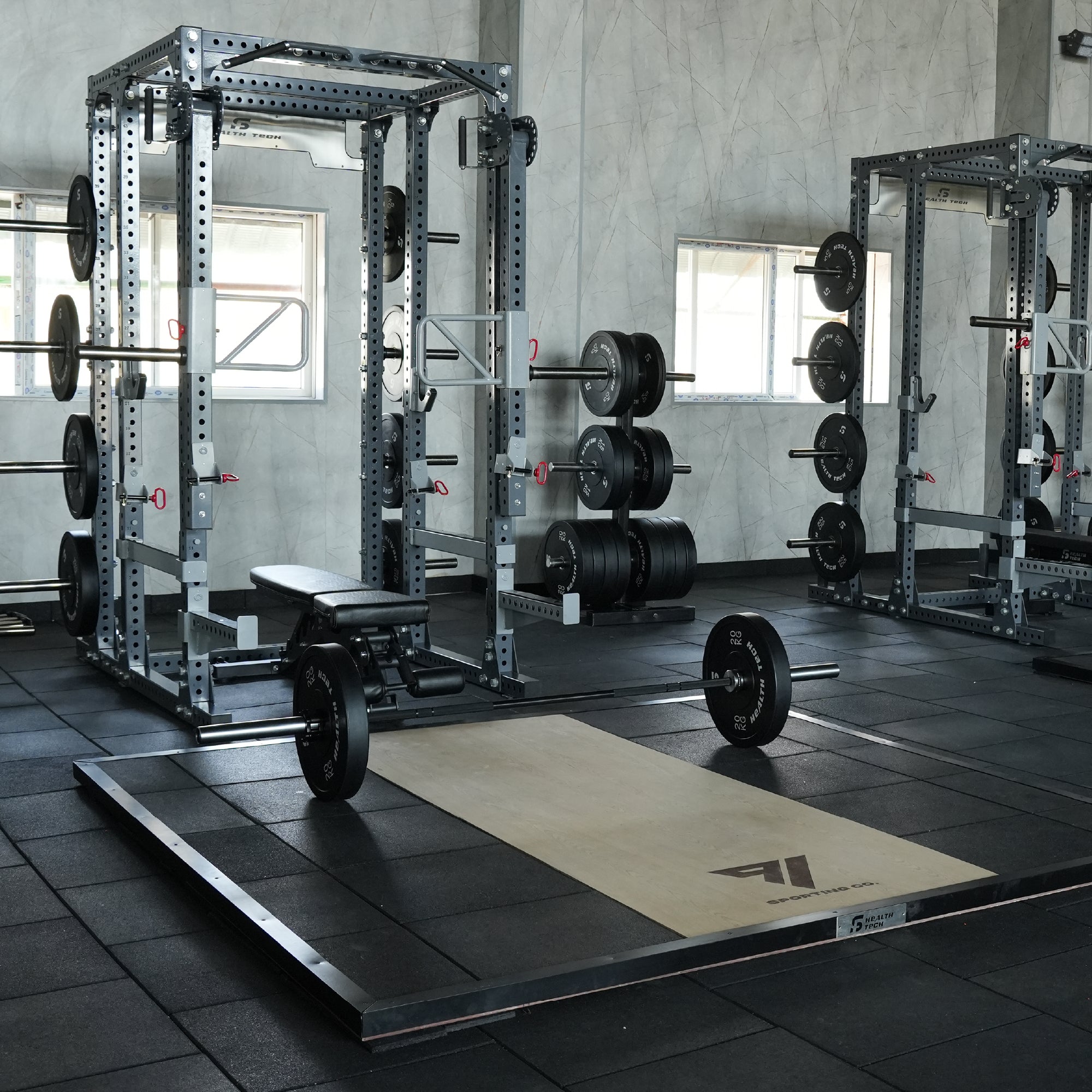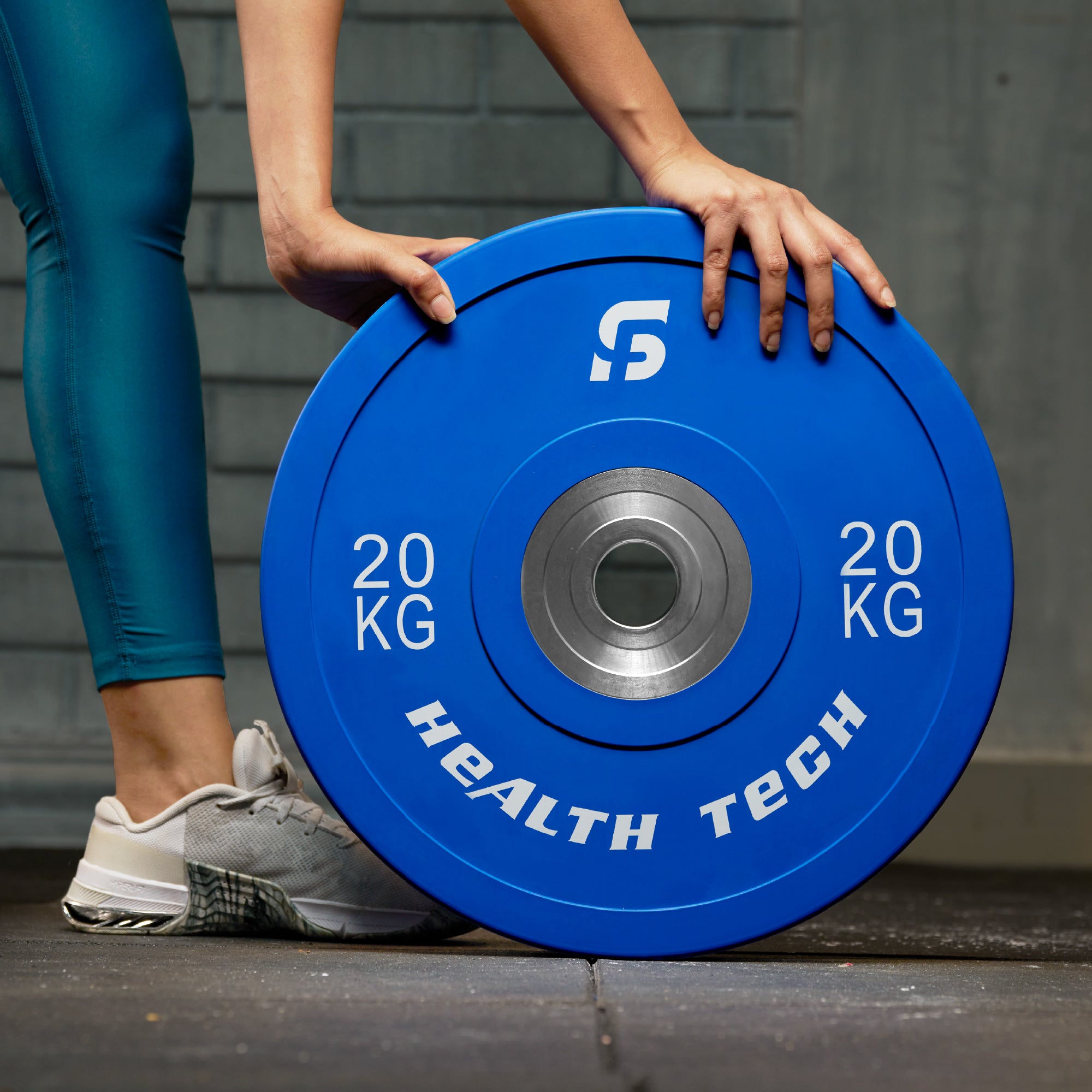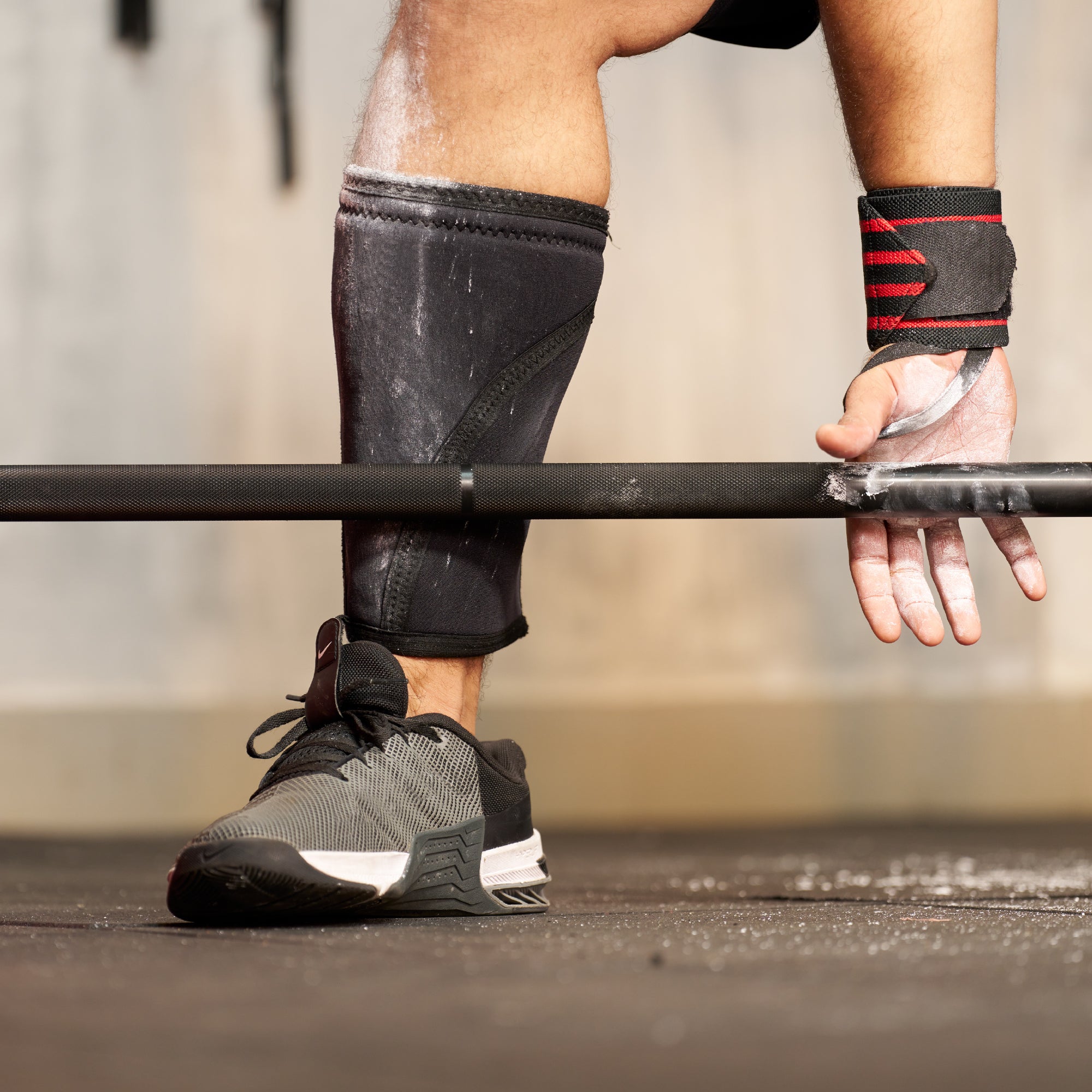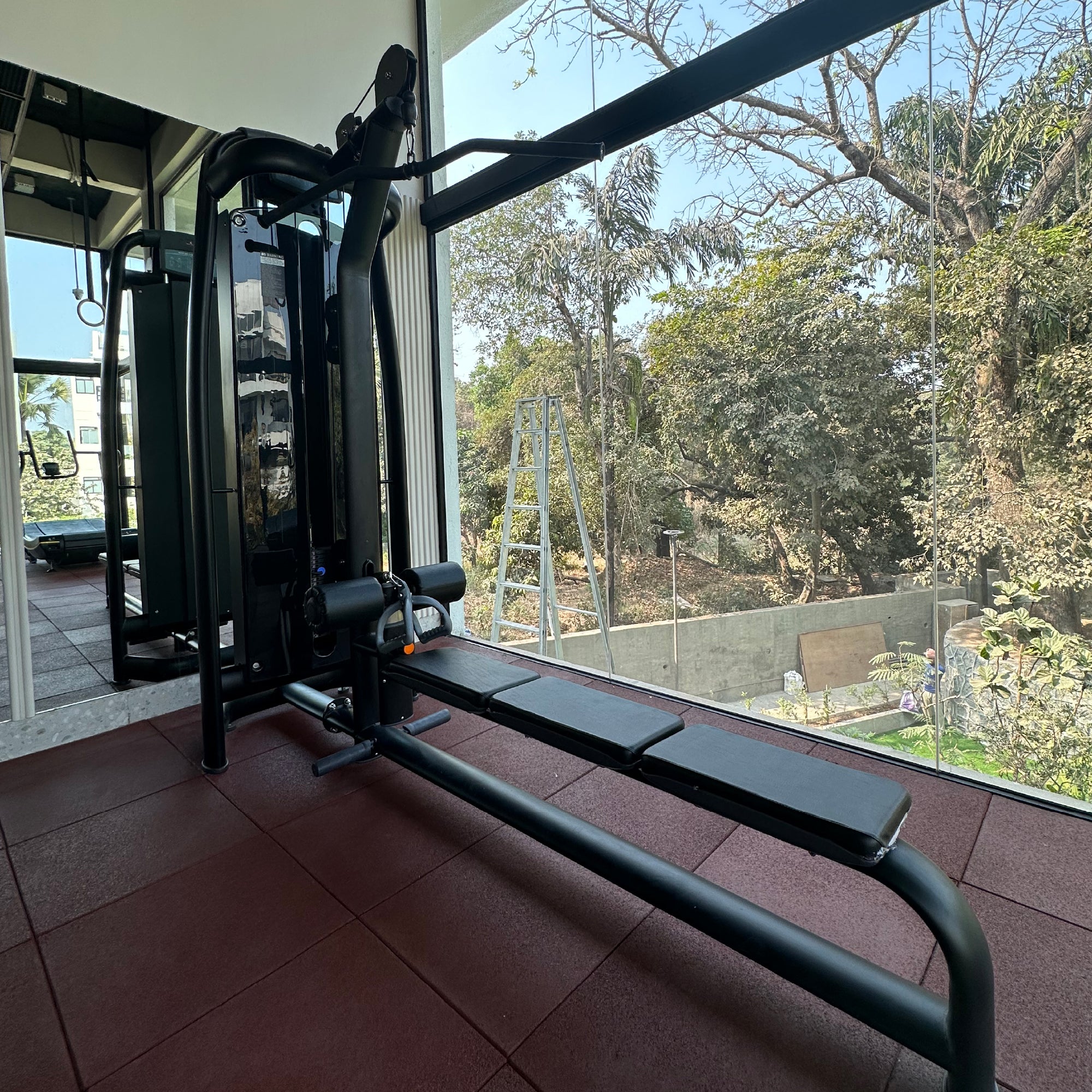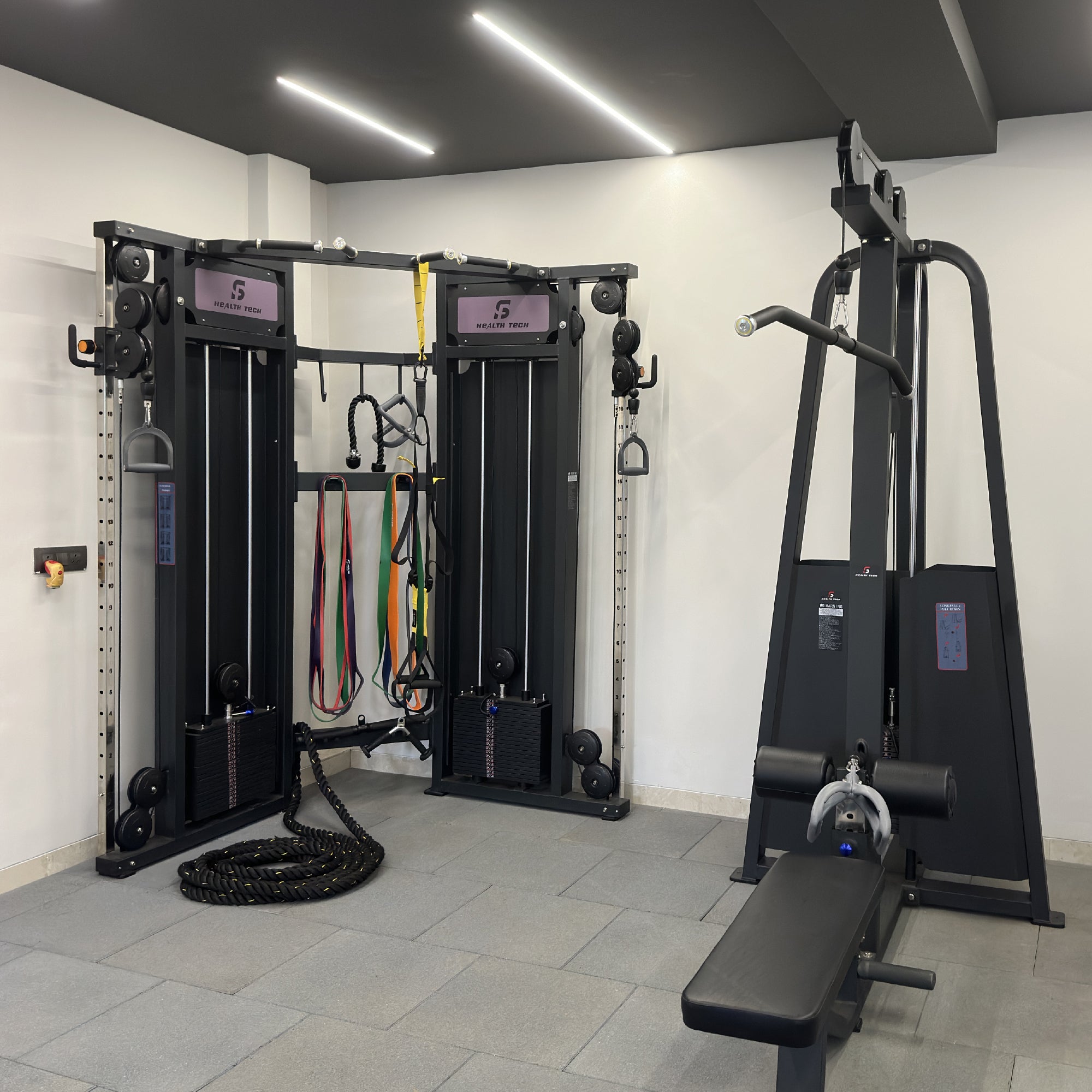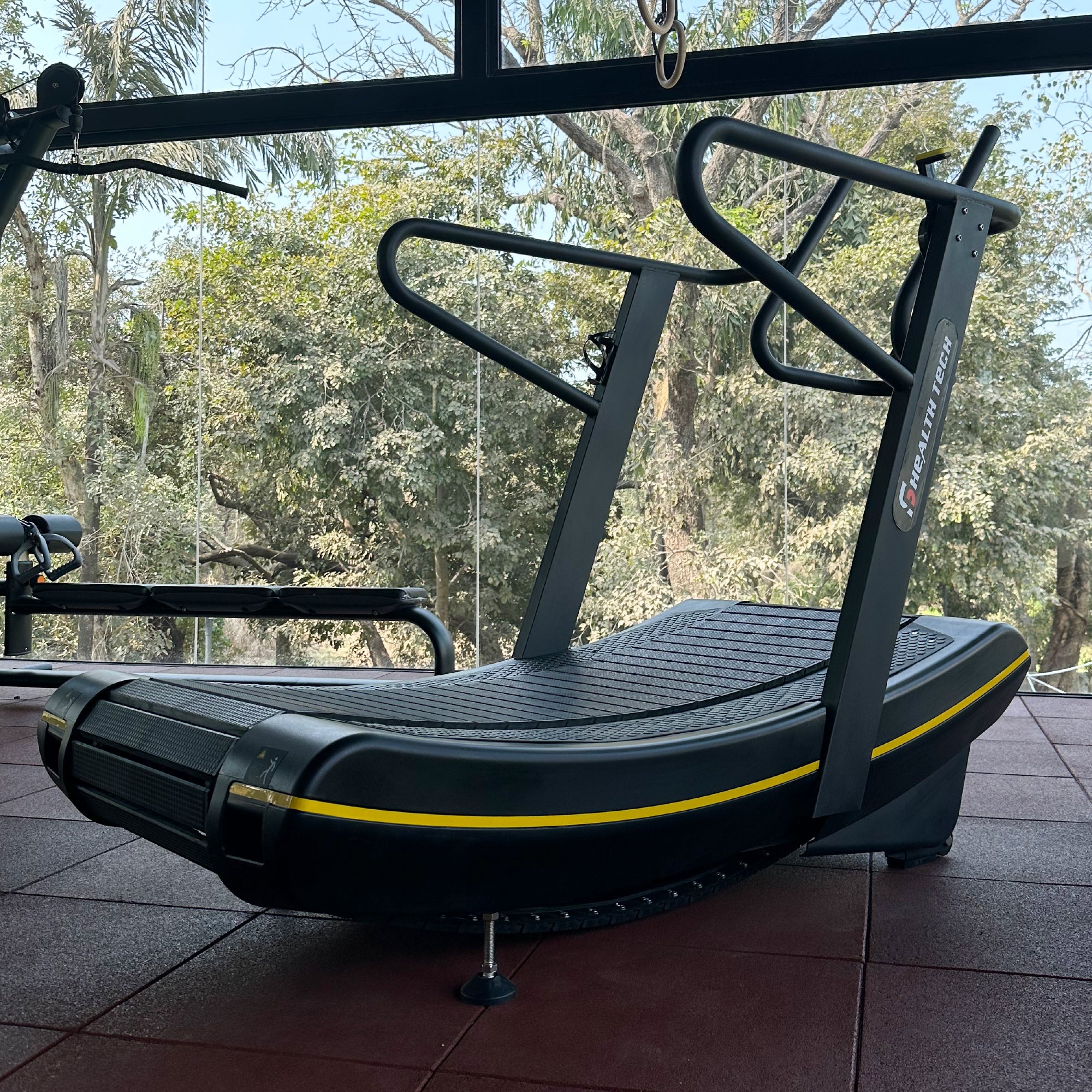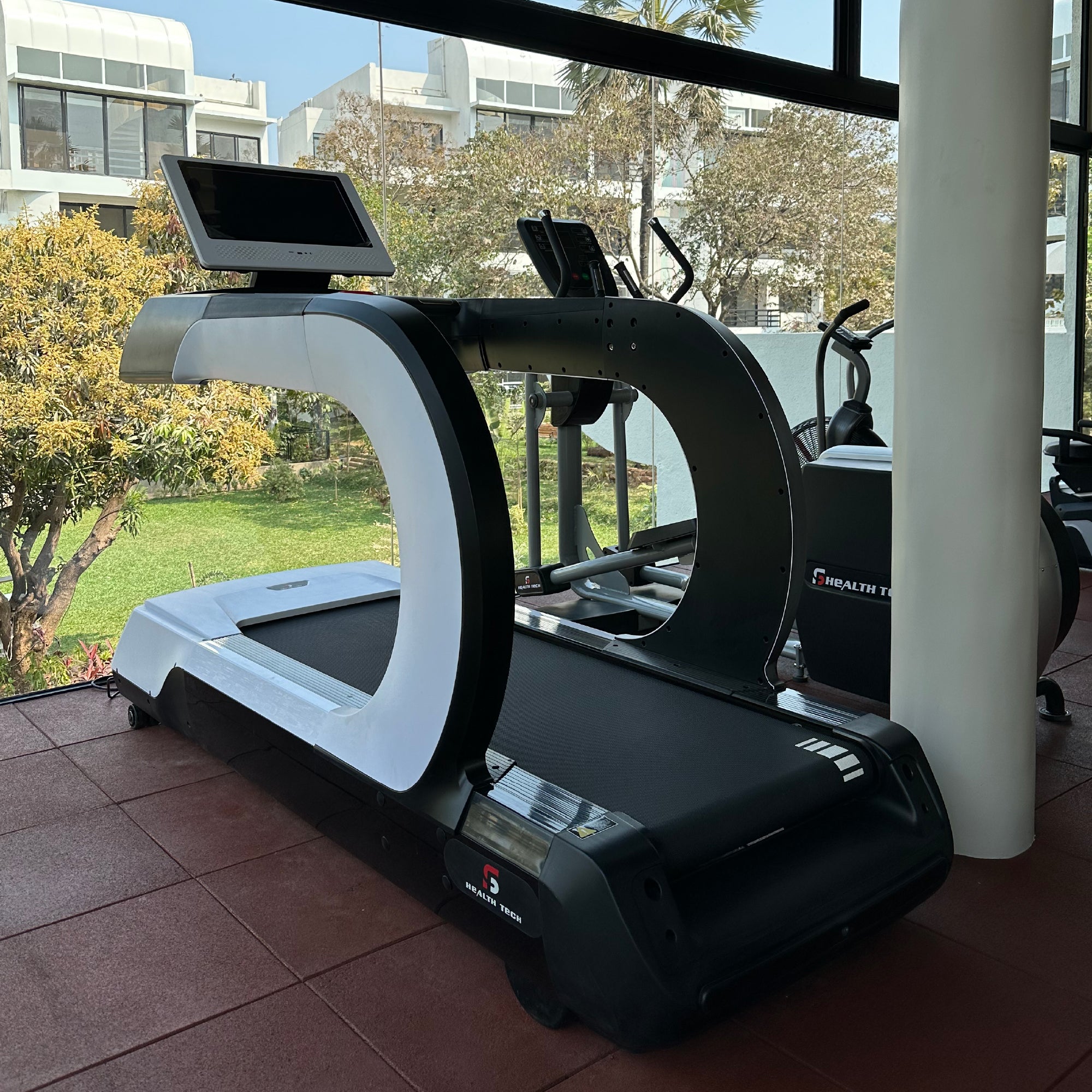Comprehensive Weightlifting Guide: Its History & Technique
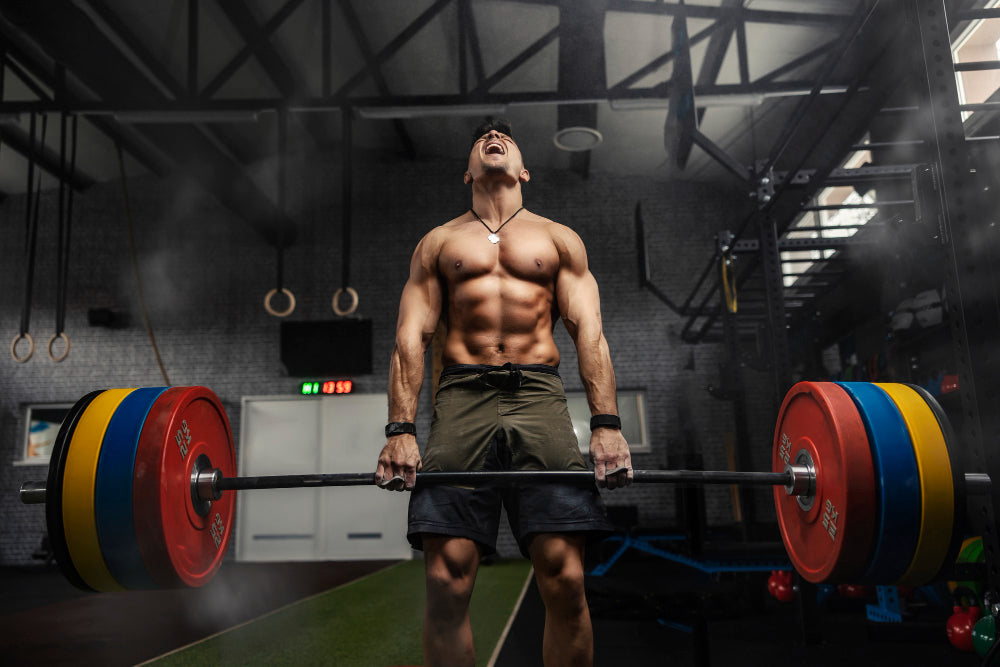
When the iron clangs and you lock eyes with a weight that seems larger than life. At that moment, weightlifting isn't just a workout; it's a battle of will, precision, and the ultimate power battle. Weightlifting offers a path to sculpted physiques, enhanced athleticism, and a stronger, healthier version of you. It's a sport that values technique and form as much as strength. Whether you're a curious beginner or a seasoned lifter looking to refine your technique, this guide will help you conquer the world of weightlifting.
What is Weightlifting?
Weightlifting is a competitive sport in which athletes lift a loaded barbell from the ground to overhead. The goal is to successfully lift the heaviest weights possible. Athletes can compete in two specific ways for lifting the barbell overhead.
What is Olympic Weightlifting?
Olympic weightlifting is an incredibly demanding and dynamic sport where competitors aim to lift a barbell loaded with heavy weight plates from the ground to a fully extended position above their heads. The challenge lies in successfully lifting the heaviest weights possible, requiring immense strength, technique, and concentration.
Olympic weightlifting is an ancient sport that has persisted for thousands of years with a consistent objective: the athlete who lifts the most weight emerges as the victor. Its origins can be traced back to ancient Egypt and Greece, where competitive displays of strength involved lifting heavy stones. The sport experienced a resurgence in the 19th century, marked by the inaugural World Weightlifting Championships in 1891.
History and Evolution of Weightlifting
Weightlifting, as a practice of lifting heavy objects, dates back thousands of years and has evolved significantly over time. The journey of weightlifting, from ancient civilizations to the modern Olympic sport we know today, is marked by fascinating developments in techniques, equipment, and cultural significance.
The roots of weightlifting can be traced back to ancient civilizations. In ancient Egypt, Greece, and China, weightlifting was practiced as a test of strength. The Greeks were particularly influential in the early development of weightlifting, incorporating it into their training for the Olympic Games. The lifting of heavy stones and other objects was a way to demonstrate physical prowess and was often a part of military training.
The late 19th and early 20th centuries marked the beginning of modern weightlifting as a sport. In 1891, the first official World Weightlifting Championships were held, and weightlifting was included in the first modern Olympic Games in 1896. During this period, the sport began to develop standardized rules and techniques.
Throughout the 20th century, weightlifting underwent significant changes in techniques and rules. The one-hand lifts were gradually phased out, and by the 1970s, the sport focused on the two-hand lifts: the snatch and the clean and jerk. These lifts require a combination of strength, speed, and technique, making weightlifting a highly specialized and technical sport.
The development of the International Weightlifting Federation (IWF) in 1920 provided a governing body to oversee the sport, standardize rules, and organize international competitions. The IWF played a crucial role in promoting weightlifting globally and ensuring consistent standards in competitions.
In the modern era, weightlifting has grown in popularity and prestige. The sport is now a staple of the Olympic Games, with athletes from around the world competing at the highest levels. Training methods have become more sophisticated, incorporating scientific principles of strength and conditioning.
Weightlifting has also become more inclusive, with women being officially allowed to compete in the Olympics starting in 2000. This inclusion has led to a significant increase in the number of female weightlifters and has contributed to the growth of the sport.
Beyond competitive weightlifting, the principles and practices of weightlifting have permeated the broader fitness culture. Strength training, once reserved for athletes and bodybuilders, is now a common component of general fitness routines. The popularity of CrossFit and other functional fitness programs has further popularized weightlifting movements, bringing them into mainstream fitness.
Weightlifting Lifts
-
Basic Lifts
- Squat: This exercise focuses on your quads, hamstrings, and glutes to help you build lower body strength.
- Deadlift: This exercise targets the entire posterior chain, with a special focus on strengthening the back, glutes, and hamstrings.
- Bench Press: It focuses on sculpting your chest, shoulders, and triceps with this targeted workout
- Overhead Press: This exercise activates your shoulders and triceps while also working on your core stability.
-
Olympic Lifts
- Snatch: This powerful exercise allows you to master full-body lifts. It involves lifting the barbell from the ground to overhead in one seamless motion.
- Clean and Jerk: This technique involves lifting the barbell to the shoulders in the clean and seamlessly transitioning to raising it overhead in the jerk.
-
Accessory Exercises
- These exercises include pull-ups, rows, and dips with the main lifts to help balance and strengthen your muscles.
How to Get Started with Weightlifting?
Are you ready to start a new in the world of weightlifting? Here's a list of equipment you need to get started.
- Essential Equipment: For weightlifting, you'll need a professional Olympic barbell, Olympic weight plates, and a sturdy weightlifting stand. For added stability, consider buying weightlifting shoes, wrist wraps, and a belt, though these are optional.
- Finding a Program: For safe and productive workouts, it's important to stick to a well-organized training program specifically suited to your experience level. There are plenty of resources, including websites, apps, and experienced weightlifting coaches, that offer programs designed for beginners, intermediates, and advanced individuals.
- Learning Proper Form: It's crucial to remember that incorrect form during weightlifting exercises can result in injury. In the upcoming sections, we will thoroughly explore the correct techniques for the two Olympic lifts, the Snatch, Clean, and Jerk.
Weightlifting Workouts
-
Clean Warm Up
First, warm up and ignite those muscles for an epic Clean session! With Shivoham’s expert guidance, you’ll learn how to properly warm up your muscles and activate your core to execute the Clean efficiently.
-
Clean
Clean is an explosive lower-body powered movement that engages almost every muscle in the body! Mastering the clean can help improve form, total body power, strength and mobility. It enables lifting heavier weights and reduces the risk of injury. However, for any workout to be beneficial, it is essential to get the technique right.
-
Clean & Jerk
Now that we’ve learned to perform the Clean efficiently, it’s time to perfect the Clean and jerk with Shivoham.
The Clean & Jerk is a highly technical lift that requires coordination, power, and speed. However, once mastered, it helps refine form, increase strength and explosiveness - taking your training to the next level.
-
Snatch
Wanna optimize your Snatch technique? Let’s warm up first.
The Snatch is a complex, technical lift that demands mobility, stability, and precision. A proper warm-up is essential to ensure your body is primed and ready to perform at its best.
Shivoham‘s expert guidance helps fine-tune your warm-up routine and prepare your body for the demands of the Snatch.
-
Accessory Workouts
We’re wrapping up our Weightlifting Tutorials with Shivoham with an Accessory Workout! Remember to take it slow, nail down the technique, and only then start cranking up the weights. Let’s do this!
- Seated Military Press
- Arnold Press
- Side raises
- Front Raises
- Bendover side raise
- Bendover row
- Wide grip pullups
- Chin-ups
- Cable curl
- Rope curl
- Incline bench Curl
- Cable press down
- Rope press down
- Incline Skull crusher
- Single Arm overhead triceps extension
- Cable Crossover
- Lunges
- Leg press
- Stiff leg deadlift
- Hanging leg raises
- Weighted sit-ups
- Weight Glute Bridges
- Good Moring
- Plank hold and Superman
Conclusion
The world of weightlifting is full of challenges and triumphs. With this guide, you can start your exciting journey. Step into the gym, embrace the iron, and unlock your full potential. Weightlifting is a marathon, not a sprint. Celebrate small victories, prioritize proper form to avoid injuries, and most importantly, have fun! As you progress, this guide will continue to be a valuable resource, evolving alongside you as you refine your technique and conquer new weightlifting milestones. Now, go forth and hoist that barbell – it's time to write your own weightlifting story.
FAQs
-
What is the difference between weightlifting, powerlifting, and bodybuilding?
Weightlifting encompasses the sport of Olympic weightlifting, which consists of two lifts: the snatch and the clean and jerk. Powerlifting revolves around the three primary lifts: the squat, bench press, and deadlift. As for bodybuilding, it prioritizes the development of muscle size and symmetry, employing diverse exercises to effectively target various muscle groups.
-
Is weightlifting safe for women?
Yes, weightlifting is safe and beneficial for women. It helps build muscle, strengthen bones, and improve overall fitness. Women should follow proper form and start with manageable weights, gradually increasing intensity as they gain strength.
-
Will I get bulky from weightlifting?
Building significant muscle mass takes time, dedication, and a specific training and nutrition plan. Weightlifting, particularly for beginners, is more likely to help you achieve a toned and sculpted physique.
-
Can weightlifting help with weight loss?
Weightlifting can contribute to weight loss by increasing muscle mass, boosting metabolism, and burning more calories at rest. When combined with a healthy diet and cardiovascular exercise, it can effectively support weight loss goals.
-
What are some good warm-up exercises for weightlifting?
Dynamic stretches such as lunges, arm circles, and jumping jacks are excellent for preparing your muscles and joints before weightlifting. Moreover, performing light weightlifting exercises using an empty bar or lighter weights can help prepare your body for heavier lifts.


